
Approaching its 25th anniversary, The UK’s National Lobster Hatchery in Padstow continues to develop its successful stock-enhancement programme.
Words and photographs by Lewis Jefferies
The UK’s National Lobster Hatchery (NLH) rears the next generations of Cornish lobsters through their early stages, giving this commercially exploited species a far greater chance of survival in the wild, while also helping support the livelihoods of local fishers.
For divers in the UK, a lobster is always an exciting find. One of the more charismatic critters on the reef, they will often be seen peering out of crevices and overhangs and may come out to investigate and even defend their patch.
They are also frequently seen inside creel fishing pots, which can be crammed full of them.
The European lobster (Homarus gammarus) is the UK’s most valuable commercial marine species, with many coastal communities relying upon it to make their living.
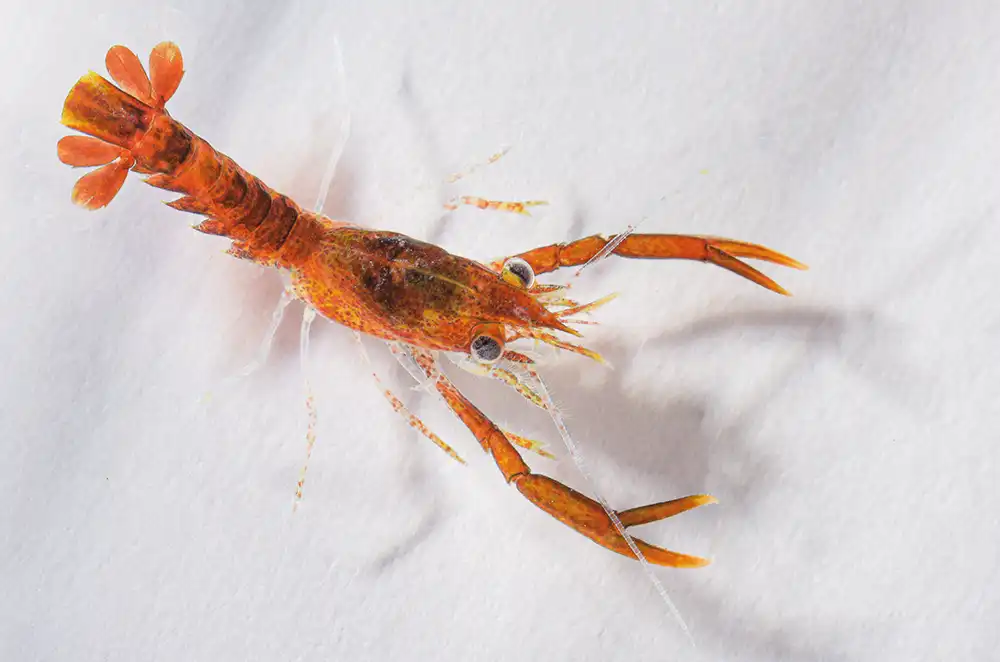
To help support the sustainability of the wild population, the NLH in Padstow was opened in 2000. Rearing the hatchlings through their early stages can increase their chances of survival by up to 1,000 times.
The NHL is led by researchers and scientists who collaborate with fishers, local restaurants and the community to help maintain a sustainable fishery. The demand for lobster is rising, and other lobster populations in Scandinavia and the Mediterranean have collapsed due to overfishing.
Lobsters in the UK are classified as vulnerable to local overexploitation, and the work of the NLH complements fisheries management measures to help ensure the UK’s population is kept sustainable.
ON THE LOBSTER MATERNITY WARD
Chris Weston, a technician at the hatchery, holds out a ‘berried hen’ or egg-bearing female, to show me the eggs around her pleopods (feathery parts underneath the abdomen), while members of the public peer through the window from the visitor centre.
‘We receive female lobsters from local fishermen,’ Chris explains. ‘They will call us when they land one with eggs that are nearly ready to hatch, and one of the team members will go and collect them.’

A single female can carry anywhere from 2,000 to 45,000 eggs, depending upon her size. However, only about one in 5,000 of these are expected to survive when laid in the wild.
The lobster gestation is between nine and 12 months, with the water temperature having an affect on when the eggs will hatch – the colder the water, the longer the gestation will be.
To control their volume of larvae, the hatchery keeps females stored at different temperatures in separate tanks, which allows them to bring the eggs on when they are ready to care for them. The hatchery has a ‘maternity ward’ where the mother lobsters are kept.
‘When the hen is ready, she will do a headstand to release the eggs,’ Chris says. ‘They then naturally float to the surface, and in the wild, this usually happens at night for safety, so predators can’t see the larvae.’
In the hatchery the tiny lobsters are collected in the morning after they have hatched and transferred to the larval system to begin their first moult.

In the first two to four weeks, baby lobsters are classed as planktonic – meaning they float around suspended in the water column – which makes them extremely vulnerable to predation. To increase survival rates, the NLH rears the larvae until they are around three months old.
Like all crustaceans, they grow through moulting, where they shed their shells and take on water to increase in size. The hatchery rears juveniles through their first four stages, where they are kept floating in recirculating aquaculture systems, which mimic conditions in the wild. Salinity, water quality and pH balance are checked daily.
Once they reach their last larval stage – looking like perfect miniature lobsters – at around two inches long, they are then transferred to a system of trays to separate individuals and prevent cannibalism.
‘Each set of trays can carry around 4,000 animals, and we have a capacity of over 24,000 in total,’ says Chris. When their last planktonic moult is complete, they can be released to the ocean, as they possess the natural instincts they need to burrow and shelter on the seabed.
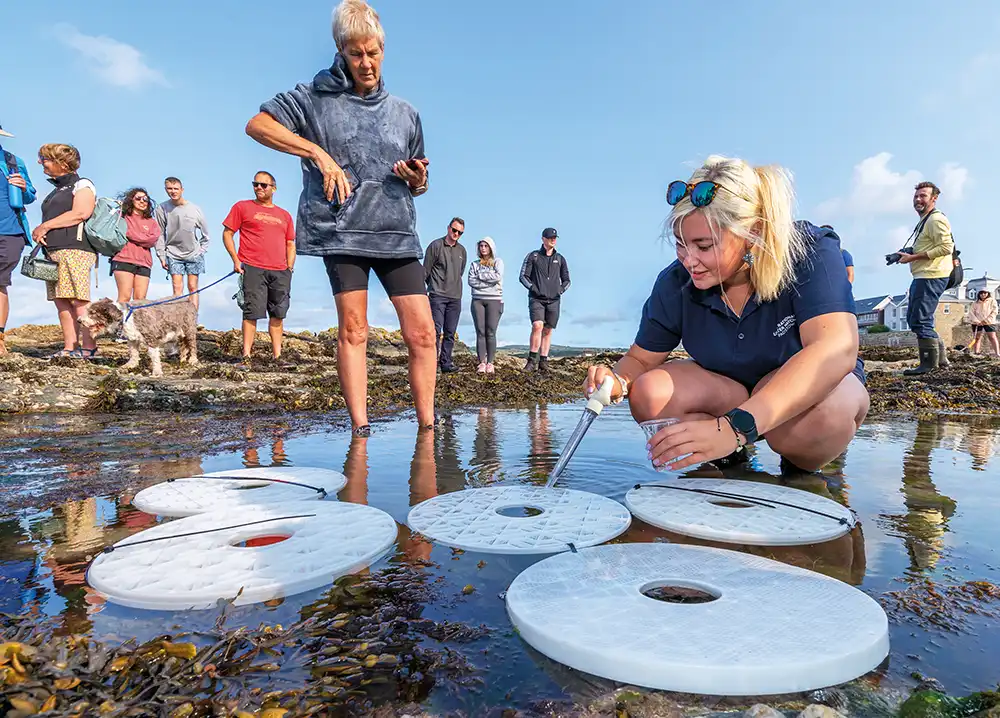
ANCIENT SCRAPPERS
Lobsters date to the Jurassic period when they shared the planet with dinosaurs. The European lobster has an unmistakable appearance – dark-blue armour with yellow, white, and red markings, large powerful claws and long red antennae.
They are either left- or right-clawed, and usually, one side is larger and used for crushing prey, while the opposing one is usually lighter and used for slicing.
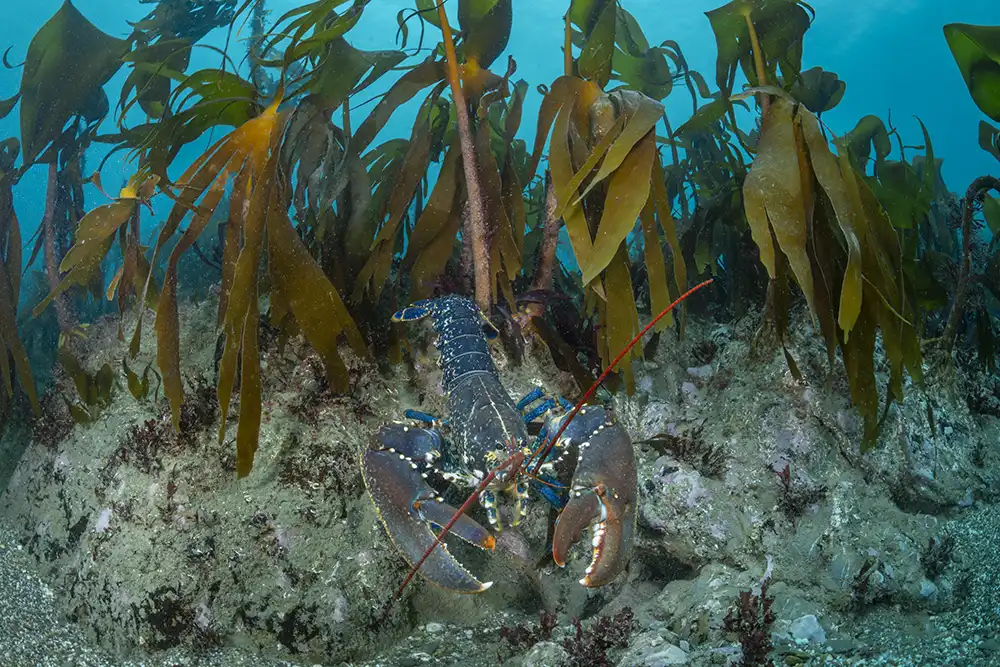
Male lobsters love to fight and will seek out other males when competing for a mate. It is not unusual for them to lose one of their claws during battle, but this isn’t a problem for long, as they can regrow them.
They are believed to live up to 100 years in the wild, and the largest European lobster ever landed was in Fowey, Cornwall, in 1931. It weighed a staggering 9.3kg and measured 127cm (50 inches) in length. Its crushing claw alone weighed 1.2kg.
The lobster mating process is a complex one, in which the female must shed her shell before mating. This leaves her very vulnerable, and the couple may stay together for a few days. Once ready they will rear up, press their bellies together and topple over, with the female on top, which is when the male deposits his sperm package.
The female will then move off independently and gorge herself on food while her shell hardens. They are caring mothers, and, once the eggs have developed, they will continuously fan fresh water over their eggs to provide a fresh stream of oxygen until they hatch.
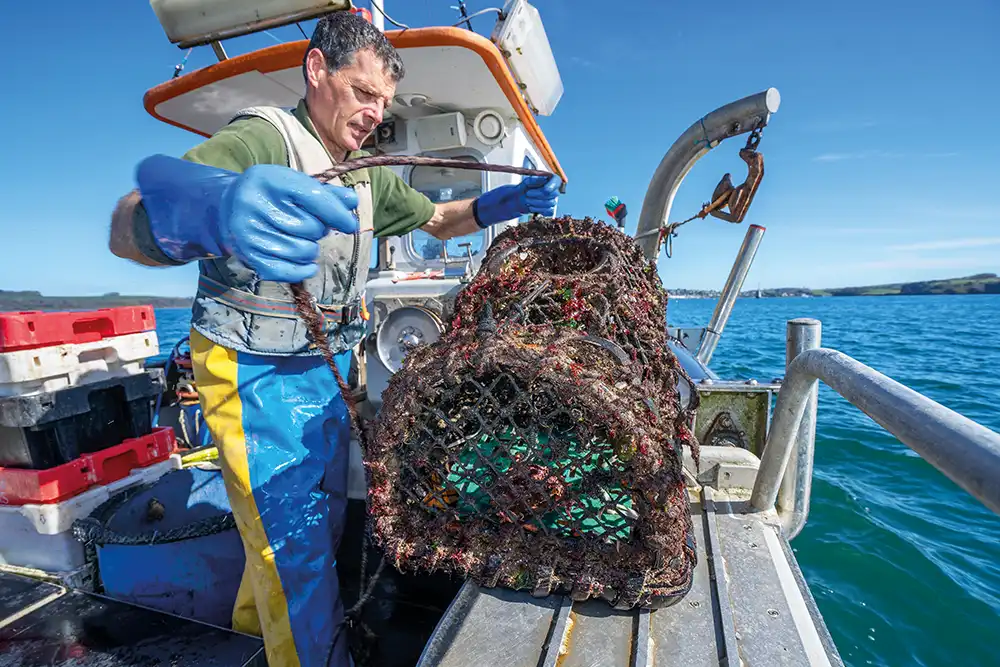
PROTECTING LOBSTERS AT SEA
A number of local fishers around Cornwall are licensed to land egg-bearing females when one is found in a creel. When an individual is landed with eggs in advanced gestation, the fishers contact the hatchery which sends a technician to collect mother and eggs. Earlier in gestation they are returned to the sea.
The fishing community has developed its own conservation system and marks egg-bearing females with a V notch cut into their tails, restricting them from being sold until the notch grows out.
It is illegal to land and sell a berried hen in the UK, but some fishers have been known to scrape off the eggs and sell the mature females. Studies have established that cutting the notch does not introduce disease nor increase the mortality of lobsters. It has been illegal to land a V-notched lobster in Britain since 2000.
Fishers will also use a special gauge to ensure that lobsters are big enough to land. They measure the length of the carapace or shell from the back of one eye socket to the edge of the carapace, which has to be 90mm or more before the lobster can be landed. This is a standard set by the Inshore Fisheries and Conservation Authority (IFCA).

Back at the hatchery, once the tiny lobsters have grown out of their planktonic stage they are released around Cornwall and the Isles of Scilly. Hatchery staff will take hundreds of lobsters to different locations and release them into rockpools at low tide.
These are often organised as public events, where all ages can take part in the release. This helps to enthuse people about the marine environment, and also inspires the next generation of ocean conservationists. Others are released from boats.
Fishers and lobster hatchery staff release larger numbers from a boat, using a specialist lobster ‘floom’, where a hose is extended to the seafloor and the lobsters are poured in through a large funnel. Divers also take between 400 and 600 individuals and release them on a suitable reef during a dive.
In the summer of 2023, a dive release was organised at the National Maritime Museum in Falmouth, outside its public underwater viewing screen. Members of the public were able to watch marine conservation in action.
Dive and boat releases are a preferred method, as it is believed that the lobsters have a greater chance of survival, being in deeper water and able to quickly find a home on the reef. They will then stay in an area for around two years until they reach sexual maturity at which point they will set off to find a mate.
DNA CHECKS
Scientists from the University of Exeter are working with the hatchery and have developed a method of identifying lobsters through their DNA. Two DNA samples, from each egg-bearing female over the past decade, have been taken to gather DNA from the mother, father and larvae. One from the pleopods and one from the eggs, that are then preserved in a freezer.
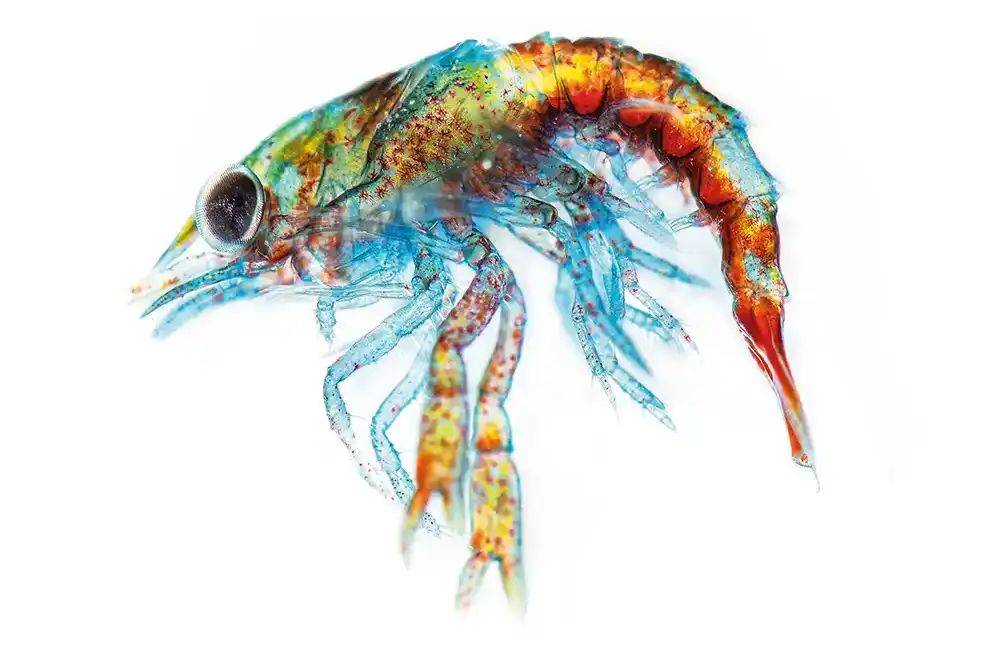
Dr Carly Daniels, head of research for the hatchery, says: ‘We have been taking samples for over ten years now, so have an amazing resource that, once we are in a position to analyse, may give us vital evidence to show the effectiveness of our work.’
With the DNA identification database in place, the NLH is currently looking for further funding to help analyse its samples which will allow it to identify hatchery-reared animals after release.
‘We have a lot of anecdotal evidence from fishermen in areas where we have done releases with the NLH,’ says Dr Daniels. ‘The fishermen have reported many more lobsters of the size you would expect in release areas, given the length of time for the lobsters to grow since we started releasing, and they are not seeing such an increase in numbers in other areas.’
Although this observation is a good indicator that the programme is working, using this DNA identification technique would provide solid evidence of its success.
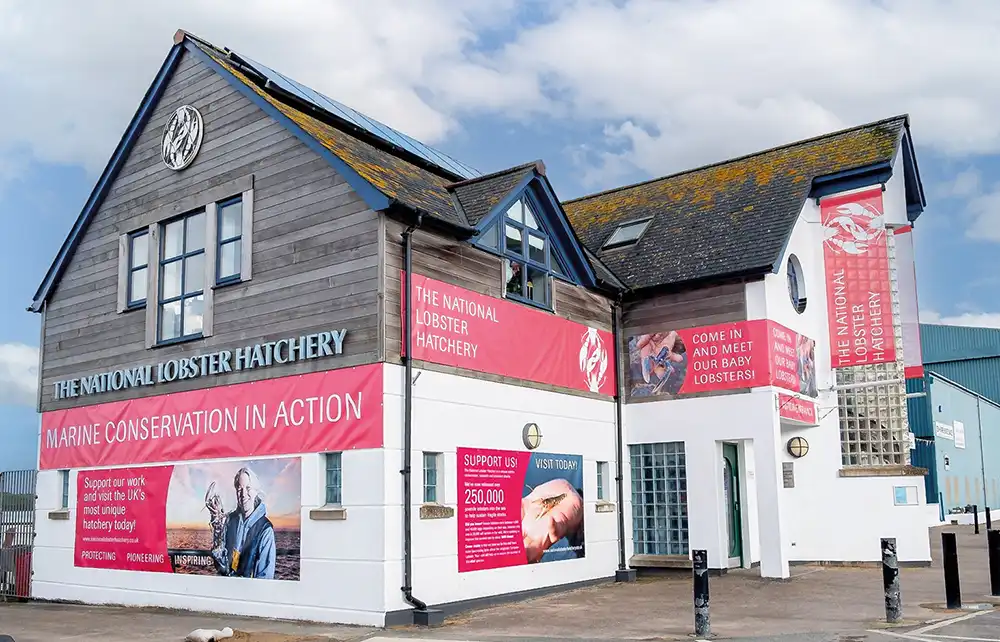
As well as working with the local fishing community to source egg-bearing females, the team at the NLH have also partnered with local restaurants, wholesalers and retailers on a fundraising scheme named ‘Buy One Set One Free’, where customers purchasing a lobster can opt to donate a small amount of money to the hatchery.
This allows customers to support the release of baby lobsters into the sea by way of a small donation that funds the hatchery’s conservation work. When you visit a seafood restaurant, look out for the sign, and if buying a lobster be sure to support the programme.
The work of The National Lobster Hatchery continues to grow and become more successful every year. In 2017 it opened another hatchery in Newlyn Harbour and has plans to extend to more satellite hatcheries and partner with more organisations to continue its conservation and research projects and raise awareness of sustainability in our oceans.
The hatchery’s work has a huge impact on sustaining the local lobster population in Cornwall and supporting the livelihoods of people who depend on it, while also making a huge contribution to public engagement and awareness of the marine environment.
More great reads from our Magazine
- The Young Dive Ambassadors of Atlantis Dumaguete
- Ocean Life – Alan J Powderham’s Coral Triangle Cameos
- Inspiring Hope – an interview with Cristina ‘Mitty’ Mittermeier
- Ross Merrin on training as a BDMLR Marine Mammal Medic
- Shark and Jolanda Reef – Howard Rosenstein on the day it all began…



